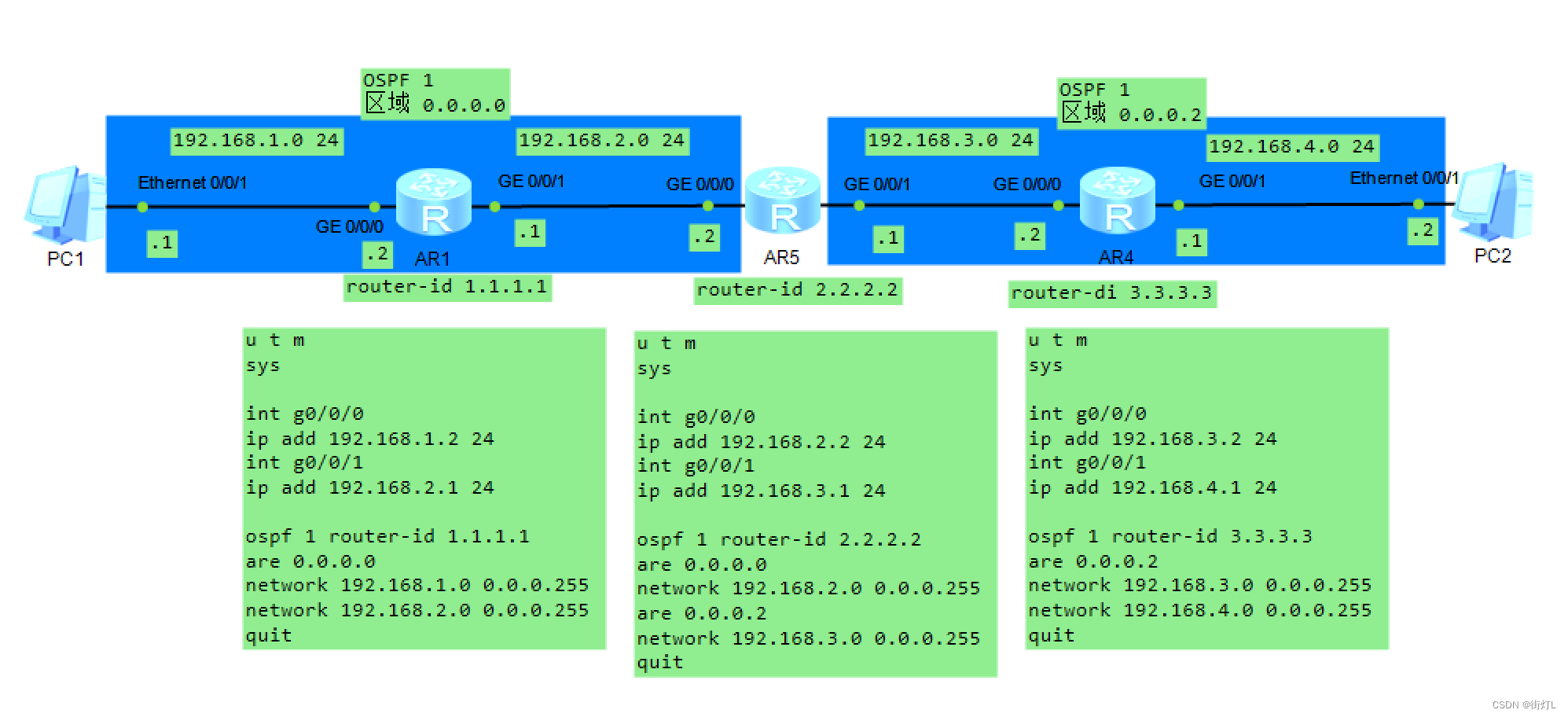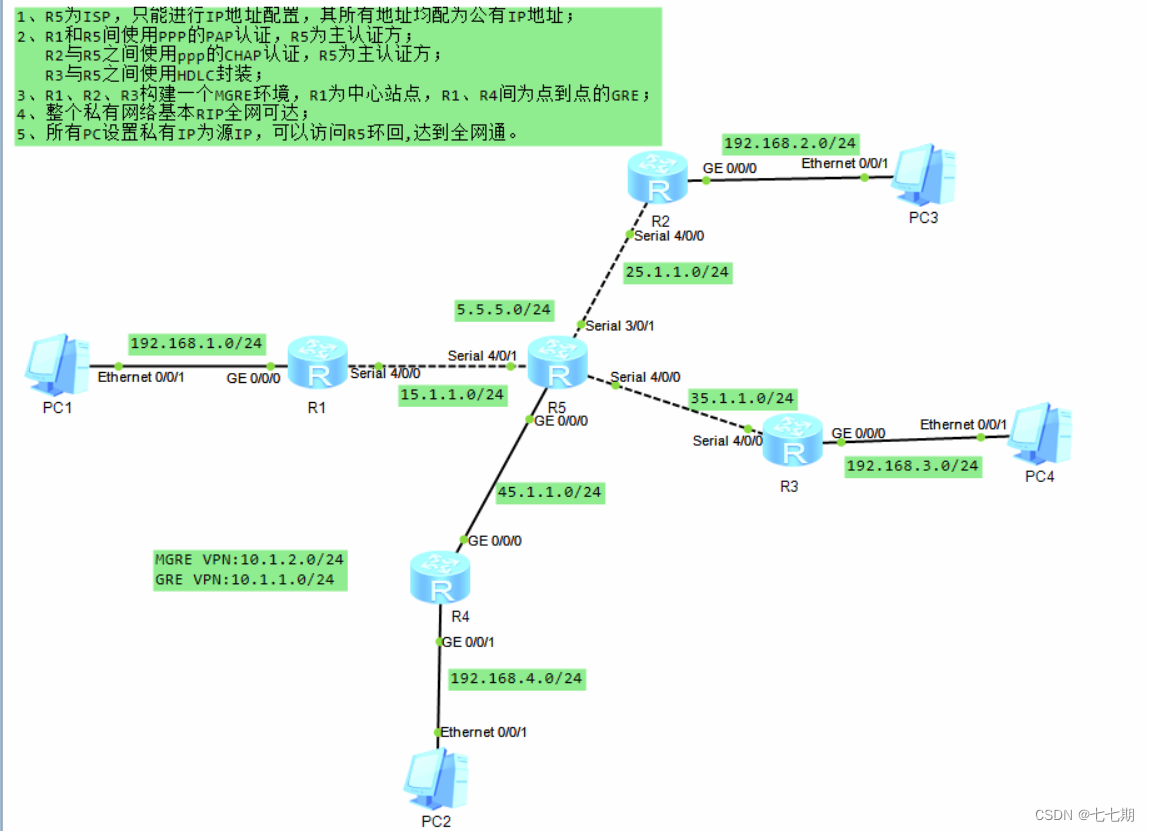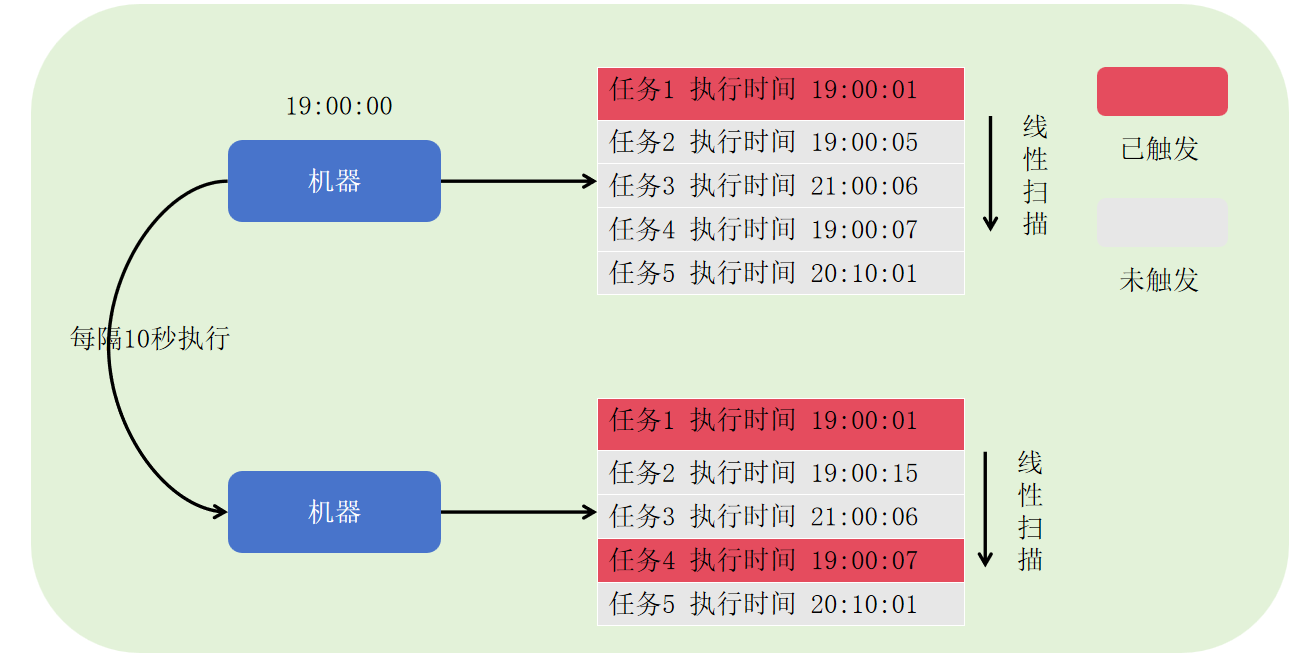# small helper modules
def Upsample(dim, dim_out = None):
return nn.Sequential(
nn.Upsample(scale_factor = 2, mode = 'nearest'),
nn.Conv2d(dim, default(dim_out, dim), 3, padding = 1)
)
def Downsample(dim, dim_out = None):
return nn.Sequential(
Rearrange('b c (h p1) (w p2) -> b (c p1 p2) h w', p1 = 2, p2 = 2),
nn.Conv2d(dim * 4, default(dim_out, dim), 1)
)
class RMSNorm(nn.Module):
def __init__(self, dim):
super().__init__()
self.g = nn.Parameter(torch.ones(1, dim, 1, 1))
def forward(self, x):
return F.normalize(x, dim = 1) * self.g * (x.shape[1] ** 0.5)
# sinusoidal positional embeds
# 生成正弦波位置嵌入(Sinusoidal Positional Embeddings)用于给定序列的位置编码,允许模型捕捉到序列中元素的相对或绝对位置信息。
class SinusoidalPosEmb(nn.Module):
def __init__(self, dim, theta = 10000):
super().__init__()
self.dim = dim
self.theta = theta
def forward(self, x):
device = x.device
half_dim = self.dim // 2
emb = math.log(self.theta) / (half_dim - 1)
emb = torch.exp(torch.arange(half_dim, device=device) * -emb)
emb = x[:, None] * emb[None, :]
emb = torch.cat((emb.sin(), emb.cos()), dim=-1)
return emb
class RandomOrLearnedSinusoidalPosEmb(nn.Module):
""" following @crowsonkb 's lead with random (learned optional) sinusoidal pos emb """
""" https://github.com/crowsonkb/v-diffusion-jax/blob/master/diffusion/models/danbooru_128.py#L8 """
def __init__(self, dim, is_random = False):
super().__init__()
assert divisible_by(dim, 2)
half_dim = dim // 2
self.weights = nn.Parameter(torch.randn(half_dim), requires_grad = not is_random)
def forward(self, x):
x = rearrange(x, 'b -> b 1')
freqs = x * rearrange(self.weights, 'd -> 1 d') * 2 * math.pi
fouriered = torch.cat((freqs.sin(), freqs.cos()), dim = -1)
fouriered = torch.cat((x, fouriered), dim = -1)
return fouriered
# building block modules
class Block(nn.Module):
def __init__(self, dim, dim_out, groups = 8):
super().__init__()
self.proj = nn.Conv2d(dim, dim_out, 3, padding = 1)
self.norm = nn.GroupNorm(groups, dim_out)
self.act = nn.SiLU()
def forward(self, x, scale_shift = None):
x = self.proj(x)
x = self.norm(x)
if exists(scale_shift):
scale, shift = scale_shift
x = x * (scale + 1) + shift
x = self.act(x)
return x
class ResnetBlock(nn.Module):
def __init__(self, dim, dim_out, *, time_emb_dim = None, groups = 8):
super().__init__()
self.mlp = nn.Sequential(
nn.SiLU(),
nn.Linear(time_emb_dim, dim_out * 2)
) if exists(time_emb_dim) else None
self.block1 = Block(dim, dim_out, groups = groups)
self.block2 = Block(dim_out, dim_out, groups = groups)
self.res_conv = nn.Conv2d(dim, dim_out, 1) if dim != dim_out else nn.Identity()
def forward(self, x, time_emb = None):
scale_shift = None
if exists(self.mlp) and exists(time_emb):
time_emb = self.mlp(time_emb)
time_emb = rearrange(time_emb, 'b c -> b c 1 1')
scale_shift = time_emb.chunk(2, dim = 1)
h = self.block1(x, scale_shift = scale_shift)
h = self.block2(h)
return h + self.res_conv(x)
class LinearAttention(nn.Module):
def __init__(
self,
dim,
heads = 4,
dim_head = 32,
num_mem_kv = 4
):
super().__init__()
self.scale = dim_head ** -0.5
self.heads = heads
hidden_dim = dim_head * heads
self.norm = RMSNorm(dim)
self.mem_kv = nn.Parameter(torch.randn(2, heads, dim_head, num_mem_kv))
self.to_qkv = nn.Conv2d(dim, hidden_dim * 3, 1, bias = False)
self.to_out = nn.Sequential(
nn.Conv2d(hidden_dim, dim, 1),
RMSNorm(dim)
)
def forward(self, x):
b, c, h, w = x.shape
x = self.norm(x)
qkv = self.to_qkv(x).chunk(3, dim = 1)
q, k, v = map(lambda t: rearrange(t, 'b (h c) x y -> b h c (x y)', h = self.heads), qkv)
mk, mv = map(lambda t: repeat(t, 'h c n -> b h c n', b = b), self.mem_kv)
k, v = map(partial(torch.cat, dim = -1), ((mk, k), (mv, v)))
q = q.softmax(dim = -2)
k = k.softmax(dim = -1)
q = q * self.scale
context = torch.einsum('b h d n, b h e n -> b h d e', k, v)
out = torch.einsum('b h d e, b h d n -> b h e n', context, q)
out = rearrange(out, 'b h c (x y) -> b (h c) x y', h = self.heads, x = h, y = w)
return self.to_out(out)
class Attention(nn.Module):
def __init__(
self,
dim,
heads = 4,
dim_head = 32,
num_mem_kv = 4,
flash = False
):
super().__init__()
self.heads = heads
hidden_dim = dim_head * heads
self.norm = RMSNorm(dim)
self.attend = Attend(flash = flash)
self.mem_kv = nn.Parameter(torch.randn(2, heads, num_mem_kv, dim_head))
self.to_qkv = nn.Conv2d(dim, hidden_dim * 3, 1, bias = False)
self.to_out = nn.Conv2d(hidden_dim, dim, 1)
def forward(self, x):
b, c, h, w = x.shape
x = self.norm(x)
qkv = self.to_qkv(x).chunk(3, dim = 1)
q, k, v = map(lambda t: rearrange(t, 'b (h c) x y -> b h (x y) c', h = self.heads), qkv)
mk, mv = map(lambda t: repeat(t, 'h n d -> b h n d', b = b), self.mem_kv)
k, v = map(partial(torch.cat, dim = -2), ((mk, k), (mv, v)))
out = self.attend(q, k, v)
out = rearrange(out, 'b h (x y) d -> b (h d) x y', x = h, y = w)
return self.to_out(out)
# model
class Unet(nn.Module):
def __init__(
self,
dim,
init_dim = None,
out_dim = None,
dim_mults = (1, 2, 4, 8), # 一个元组,包含了从初始维度到最终维度的倍数序列。
channels = 3,
self_condition = False, # 是否使用自注意力机制。
resnet_block_groups = 8,
learned_variance = False, # 是否学习方差。
learned_sinusoidal_cond = False, # 是否使用学习到的正弦波位置编码
random_fourier_features = False, # 是否使用随机傅里叶特征
learned_sinusoidal_dim = 16,
sinusoidal_pos_emb_theta = 10000,
attn_dim_head = 32, # 注意力头的维度
attn_heads = 4, # 注意力头的数量
full_attn = None, # defaults to full attention only for inner most layer
# 指示哪些层使用全注意力机制。如果为 None,则默认在最内层使用全注意力。
flash_attn = False # 是否使用快速注意力机制
):
super().__init__()
# determine dimensions
self.channels = channels
self.self_condition = self_condition
input_channels = channels * (2 if self_condition else 1)
init_dim = default(init_dim, dim)
self.init_conv = nn.Conv2d(input_channels, init_dim, 7, padding = 3)
dims = [init_dim, *map(lambda m: dim * m, dim_mults)] # 将 dim 乘以 dim_mults 中的每个元素 m
#* 用于解包列表或元组。在这里,它将 map 函数返回的迭代器中的每个元素(即每个乘以 dim 后的倍数)解包并作为单独的元素添加到 dims 列表中。
in_out = list(zip(dims[:-1], dims[1:]))
block_klass = partial(ResnetBlock, groups = resnet_block_groups)
# time embeddings
time_dim = dim * 4
self.random_or_learned_sinusoidal_cond = learned_sinusoidal_cond or random_fourier_features
if self.random_or_learned_sinusoidal_cond:
sinu_pos_emb = RandomOrLearnedSinusoidalPosEmb(learned_sinusoidal_dim, random_fourier_features)
fourier_dim = learned_sinusoidal_dim + 1
else:
sinu_pos_emb = SinusoidalPosEmb(dim, theta = sinusoidal_pos_emb_theta)
fourier_dim = dim
self.time_mlp = nn.Sequential(
sinu_pos_emb,
nn.Linear(fourier_dim, time_dim),
nn.GELU(),
nn.Linear(time_dim, time_dim)
)
# attention
if not full_attn:
full_attn = (*((False,) * (len(dim_mults) - 1)), True)
num_stages = len(dim_mults)
full_attn = cast_tuple(full_attn, num_stages)
attn_heads = cast_tuple(attn_heads, num_stages)
attn_dim_head = cast_tuple(attn_dim_head, num_stages)
assert len(full_attn) == len(dim_mults)
FullAttention = partial(Attention, flash = flash_attn)
# layers
self.downs = nn.ModuleList([])
self.ups = nn.ModuleList([])
num_resolutions = len(in_out)
for ind, ((dim_in, dim_out), layer_full_attn, layer_attn_heads, layer_attn_dim_head) in enumerate(zip(in_out, full_attn, attn_heads, attn_dim_head)):
is_last = ind >= (num_resolutions - 1)
attn_klass = FullAttention if layer_full_attn else LinearAttention
self.downs.append(nn.ModuleList([
block_klass(dim_in, dim_in, time_emb_dim = time_dim),
block_klass(dim_in, dim_in, time_emb_dim = time_dim),
attn_klass(dim_in, dim_head = layer_attn_dim_head, heads = layer_attn_heads),
Downsample(dim_in, dim_out) if not is_last else nn.Conv2d(dim_in, dim_out, 3, padding = 1)
]))
mid_dim = dims[-1]
self.mid_block1 = block_klass(mid_dim, mid_dim, time_emb_dim = time_dim)
self.mid_attn = FullAttention(mid_dim, heads = attn_heads[-1], dim_head = attn_dim_head[-1])
self.mid_block2 = block_klass(mid_dim, mid_dim, time_emb_dim = time_dim)
for ind, ((dim_in, dim_out), layer_full_attn, layer_attn_heads, layer_attn_dim_head) in enumerate(zip(*map(reversed, (in_out, full_attn, attn_heads, attn_dim_head)))):
is_last = ind == (len(in_out) - 1)
attn_klass = FullAttention if layer_full_attn else LinearAttention
self.ups.append(nn.ModuleList([
block_klass(dim_out + dim_in, dim_out, time_emb_dim = time_dim),
block_klass(dim_out + dim_in, dim_out, time_emb_dim = time_dim),
attn_klass(dim_out, dim_head = layer_attn_dim_head, heads = layer_attn_heads),
Upsample(dim_out, dim_in) if not is_last else nn.Conv2d(dim_out, dim_in, 3, padding = 1)
]))
default_out_dim = channels * (1 if not learned_variance else 2)
self.out_dim = default(out_dim, default_out_dim)
self.final_res_block = block_klass(dim * 2, dim, time_emb_dim = time_dim)
self.final_conv = nn.Conv2d(dim, self.out_dim, 1)
@property
def downsample_factor(self):
return 2 ** (len(self.downs) - 1)
def forward(self, x, time, x_self_cond = None):
assert all([divisible_by(d, self.downsample_factor) for d in x.shape[-2:]]), f'your input dimensions {x.shape[-2:]} need to be divisible by {self.downsample_factor}, given the unet'
if self.self_condition:
x_self_cond = default(x_self_cond, lambda: torch.zeros_like(x))
x = torch.cat((x_self_cond, x), dim = 1)
x = self.init_conv(x)
r = x.clone()
t = self.time_mlp(time)
h = []
for block1, block2, attn, downsample in self.downs:
x = block1(x, t)
h.append(x)
x = block2(x, t)
x = attn(x) + x
h.append(x)
x = downsample(x)
x = self.mid_block1(x, t)
x = self.mid_attn(x) + x
x = self.mid_block2(x, t)
for block1, block2, attn, upsample in self.ups:
x = torch.cat((x, h.pop()), dim = 1)
x = block1(x, t)
x = torch.cat((x, h.pop()), dim = 1)
x = block2(x, t)
x = attn(x) + x
x = upsample(x)
x = torch.cat((x, r), dim = 1)
x = self.final_res_block(x, t)
return self.final_conv(x)
以下为关键代码
# gaussian diffusion trainer class
def extract(a, t, x_shape):
# 从一个大的参数张量中根据时间步索引提取相应的参数,并将其重塑为与输入张量 x_t 相匹配的形状,以便在扩散模型的不同阶段使用
b, *_ = t.shape
out = a.gather(-1, t) # 从张量 a 中提取索引为 t 的元素
return out.reshape(b, *((1,) * (len(x_shape) - 1)))
def linear_beta_schedule(timesteps):
"""
linear schedule, proposed in original ddpm paper
"""
scale = 1000 / timesteps
beta_start = scale * 0.0001
beta_end = scale * 0.02
return torch.linspace(beta_start, beta_end, timesteps, dtype = torch.float64)
def cosine_beta_schedule(timesteps, s = 0.008):
"""
cosine schedule
as proposed in https://openreview.net/forum?id=-NEXDKk8gZ
"""
steps = timesteps + 1
t = torch.linspace(0, timesteps, steps, dtype = torch.float64) / timesteps
alphas_cumprod = torch.cos((t + s) / (1 + s) * math.pi * 0.5) ** 2
alphas_cumprod = alphas_cumprod / alphas_cumprod[0]
betas = 1 - (alphas_cumprod[1:] / alphas_cumprod[:-1])
return torch.clip(betas, 0, 0.999)
def sigmoid_beta_schedule(timesteps, start = -3, end = 3, tau = 1, clamp_min = 1e-5):
"""
sigmoid schedule
proposed in https://arxiv.org/abs/2212.11972 - Figure 8
better for images > 64x64, when used during training
"""
steps = timesteps + 1
t = torch.linspace(0, timesteps, steps, dtype = torch.float64) / timesteps
# 生成一个线性间隔的张量 t,它从 0 到 timesteps,包含 steps 个元素,然后将这个张量除以 timesteps,使其在 0 到 1 之间均匀分布
v_start = torch.tensor(start / tau).sigmoid()
# 计算 sigmoid 函数在 start 时刻的值,并将 start 除以 tau 来调整 sigmoid 函数的位置
v_end = torch.tensor(end / tau).sigmoid()
alphas_cumprod = (-((t * (end - start) + start) / tau).sigmoid() + v_end) / (v_end - v_start)
# 计算累积乘积 alphas_cumprod,这是一个关于时间步 t 的函数,它使用 sigmoid 函数来调整每个时间步的权重
alphas_cumprod = alphas_cumprod / alphas_cumprod[0]
# 将 alphas_cumprod 的第一个元素设置为 1,以便在后续计算中有一个参考点
betas = 1 - (alphas_cumprod[1:] / alphas_cumprod[:-1])
# 将 betas 的值限制在 0 到 0.999 之间
return torch.clip(betas, 0, 0.999)
以下为GaussianDiffusion代码
class GaussianDiffusion(nn.Module):
def __init__(
self,
model,
*,
image_size,
timesteps = 1000,
sampling_timesteps = None,
objective = 'pred_v',
beta_schedule = 'sigmoid', # 用于定义时间步的噪声调度策略。
schedule_fn_kwargs = dict(),
ddim_sampling_eta = 0.,
auto_normalize = True,
offset_noise_strength = 0., # https://www.crosslabs.org/blog/diffusion-with-offset-noise
min_snr_loss_weight = False, # https://arxiv.org/abs/2303.09556
min_snr_gamma = 5
):
super().__init__()
assert not (type(self) == GaussianDiffusion and model.channels != model.out_dim)
assert not hasattr(model, 'random_or_learned_sinusoidal_cond') or not model.random_or_learned_sinusoidal_cond
self.model = model
self.channels = self.model.channels
self.self_condition = self.model.self_condition
self.image_size = image_size
self.objective = objective
assert objective in {'pred_noise', 'pred_x0', 'pred_v'}, 'objective must be either pred_noise (predict noise) or pred_x0 (predict image start) or pred_v (predict v [v-parameterization as defined in appendix D of progressive distillation paper, used in imagen-video successfully])'
if beta_schedule == 'linear':
beta_schedule_fn = linear_beta_schedule
elif beta_schedule == 'cosine':
beta_schedule_fn = cosine_beta_schedule
elif beta_schedule == 'sigmoid':
beta_schedule_fn = sigmoid_beta_schedule
else:
raise ValueError(f'unknown beta schedule {beta_schedule}')
betas = beta_schedule_fn(timesteps, **schedule_fn_kwargs)
# 计算每个时间步的 beta 值,beta 值通常用于控制扩散过程中的噪声水平
alphas = 1. - betas # 表示在每个时间步中数据的清晰度或信号强度
alphas_cumprod = torch.cumprod(alphas, dim=0)
# 计算 alphas 序列沿着指定维度(这里是 dim=0,即沿着时间步的维度)的累积乘积
alphas_cumprod_prev = F.pad(alphas_cumprod[:-1], (1, 0), value = 1.)
# 在 alphas_cumprod 序列的前面添加一个元素,这里添加的是 1(因为第一个时间步没有前一个时间步,所以它的累积乘积应该是 1)
# 与扩散过程相关的缓冲区,它们在模型训练期间计算并存储,用于后续的采样和预测
timesteps, = betas.shape
self.num_timesteps = int(timesteps) # 采样时使用的时间步数量。
# sampling related parameters
self.sampling_timesteps = default(sampling_timesteps, timesteps) # default num sampling timesteps to number of timesteps at training
assert self.sampling_timesteps <= timesteps
self.is_ddim_sampling = self.sampling_timesteps < timesteps
self.ddim_sampling_eta = ddim_sampling_eta
# helper function to register buffer from float64 to float32
register_buffer = lambda name, val: self.register_buffer(name, val.to(torch.float32))
# 用于将浮点数注册为缓冲区,并转换为 float32 类型。
# 一个张量标记为模型的一部分,但这个张量不会被视为模型参数,也就是说,在训练过程中它不会被计算梯度或被优化
# 通过将这些中间结果注册为缓冲区,模型可以在前向传播中重用它们,而无需在每次调用时重新计算。
# 这可以显著提高模型的效率,尤其是在处理大量时间步的扩散模型时。
# 此外,这些缓冲区在模型的 state_dict 中被保存,这意味着它们可以在模型加载时恢复,这对于模型的持久化和恢复训练非常有用。
register_buffer('betas', betas)
register_buffer('alphas_cumprod', alphas_cumprod)
register_buffer('alphas_cumprod_prev', alphas_cumprod_prev)
# calculations for diffusion q(x_t | x_{t-1}) and others
register_buffer('sqrt_alphas_cumprod', torch.sqrt(alphas_cumprod))
register_buffer('sqrt_one_minus_alphas_cumprod', torch.sqrt(1. - alphas_cumprod))
register_buffer('log_one_minus_alphas_cumprod', torch.log(1. - alphas_cumprod))
register_buffer('sqrt_recip_alphas_cumprod', torch.sqrt(1. / alphas_cumprod))
register_buffer('sqrt_recipm1_alphas_cumprod', torch.sqrt(1. / alphas_cumprod - 1))
# calculations for posterior q(x_{t-1} | x_t, x_0)
posterior_variance = betas * (1. - alphas_cumprod_prev) / (1. - alphas_cumprod)
# above: equal to 1. / (1. / (1. - alpha_cumprod_tm1) + alpha_t / beta_t)
register_buffer('posterior_variance', posterior_variance)
# below: log calculation clipped because the posterior variance is 0 at the beginning of the diffusion chain
register_buffer('posterior_log_variance_clipped', torch.log(posterior_variance.clamp(min =1e-20)))
register_buffer('posterior_mean_coef1', betas * torch.sqrt(alphas_cumprod_prev) / (1. - alphas_cumprod))
register_buffer('posterior_mean_coef2', (1. - alphas_cumprod_prev) * torch.sqrt(alphas) / (1. - alphas_cumprod))
# offset noise strength - in blogpost, they claimed 0.1 was ideal
self.offset_noise_strength = offset_noise_strength
# 保存偏移噪声强度,这是一种提高模型性能的技术。
# derive loss weight
# snr - signal noise ratio
snr = alphas_cumprod / (1 - alphas_cumprod)
# https://arxiv.org/abs/2303.09556
maybe_clipped_snr = snr.clone()
if min_snr_loss_weight:
maybe_clipped_snr.clamp_(max = min_snr_gamma)
if objective == 'pred_noise':
register_buffer('loss_weight', maybe_clipped_snr / snr)
elif objective == 'pred_x0':
register_buffer('loss_weight', maybe_clipped_snr)
elif objective == 'pred_v':
register_buffer('loss_weight', maybe_clipped_snr / (snr + 1))
# auto-normalization of data [0, 1] -> [-1, 1] - can turn off by setting it to be False
self.normalize = normalize_to_neg_one_to_one if auto_normalize else identity
self.unnormalize = unnormalize_to_zero_to_one if auto_normalize else identity
# 数据标准化和反标准化
@property
def device(self):
return self.betas.device
def predict_start_from_noise(self, x_t, t, noise):
# 从
return (
extract(self.sqrt_recip_alphas_cumprod, t, x_t.shape) * x_t -
extract(self.sqrt_recipm1_alphas_cumprod, t, x_t.shape) * noise
)
def predict_noise_from_start(self, x_t, t, x0):
return (
(extract(self.sqrt_recip_alphas_cumprod, t, x_t.shape) * x_t - x0) / \
extract(self.sqrt_recipm1_alphas_cumprod, t, x_t.shape)
)
def predict_v(self, x_start, t, noise):
return (
extract(self.sqrt_alphas_cumprod, t, x_start.shape) * noise -
extract(self.sqrt_one_minus_alphas_cumprod, t, x_start.shape) * x_start
)
def predict_start_from_v(self, x_t, t, v):
return (
extract(self.sqrt_alphas_cumprod, t, x_t.shape) * x_t -
extract(self.sqrt_one_minus_alphas_cumprod, t, x_t.shape) * v
)
def q_posterior(self, x_start, x_t, t): # 计算后验分布的均值、方差和对数方差
posterior_mean = (
extract(self.posterior_mean_coef1, t, x_t.shape) * x_start +
extract(self.posterior_mean_coef2, t, x_t.shape) * x_t
)
posterior_variance = extract(self.posterior_variance, t, x_t.shape)
posterior_log_variance_clipped = extract(self.posterior_log_variance_clipped, t, x_t.shape)
return posterior_mean, posterior_variance, posterior_log_variance_clipped
def model_predictions(self, x, t, x_self_cond = None, clip_x_start = False, rederive_pred_noise = False):
# 根据当前的输入和时间步,获取模型的预测结果
model_output = self.model(x, t, x_self_cond)
maybe_clip = partial(torch.clamp, min = -1., max = 1.) if clip_x_start else identity
if self.objective == 'pred_noise':
pred_noise = model_output
x_start = self.predict_start_from_noise(x, t, pred_noise)
x_start = maybe_clip(x_start)
if clip_x_start and rederive_pred_noise:
pred_noise = self.predict_noise_from_start(x, t, x_start)
elif self.objective == 'pred_x0':
x_start = model_output
x_start = maybe_clip(x_start)
pred_noise = self.predict_noise_from_start(x, t, x_start)
elif self.objective == 'pred_v':
v = model_output
x_start = self.predict_start_from_v(x, t, v)
x_start = maybe_clip(x_start)
pred_noise = self.predict_noise_from_start(x, t, x_start)
return ModelPrediction(pred_noise, x_start)
def p_mean_variance(self, x, t, x_self_cond = None, clip_denoised = True):
# 算给定输入和时间步的均值和方差
preds = self.model_predictions(x, t, x_self_cond)
x_start = preds.pred_x_start
if clip_denoised:
x_start.clamp_(-1., 1.)
model_mean, posterior_variance, posterior_log_variance = self.q_posterior(x_start = x_start, x_t = x, t = t)
return model_mean, posterior_variance, posterior_log_variance, x_start
@torch.inference_mode()
def p_sample(self, x, t: int, x_self_cond = None): # 采样函数,用于生成新的图像样本
b, *_, device = *x.shape, self.device
batched_times = torch.full((b,), t, device = device, dtype = torch.long)
# 创建了一个形状为(b,)的张量,填充值为t,用于表示每个样本的时间步长
model_mean, _, model_log_variance, x_start = self.p_mean_variance(x = x, t = batched_times, x_self_cond = x_self_cond, clip_denoised = True)
# 计算给定时间步长的模型均值、模型对数方差和初始图,生成新的图像样本
noise = torch.randn_like(x) if t > 0 else 0. # no noise if t == 0
# 根据时间步长t生成噪声。如果t大于0,则生成与输入x相同形状的随机噪声张量;否则,设置噪声为0
pred_img = model_mean + (0.5 * model_log_variance).exp() * noise
return pred_img, x_start
@torch.inference_mode()
def p_sample_loop(self, shape, return_all_timesteps = False):
batch, device = shape[0], self.device
img = torch.randn(shape, device = device)
imgs = [img]
x_start = None
for t in tqdm(reversed(range(0, self.num_timesteps)), desc = 'sampling loop time step', total = self.num_timesteps):
# 从self.num_timesteps到0进行迭代。使用tqdm库显示采样循环的进度
self_cond = x_start if self.self_condition else None
img, x_start = self.p_sample(img, t, self_cond)
imgs.append(img)
# 当前时间步长t和初始图像x_start调用p_sample方法来生成新的图像样本img
# 同时更新x_start为当前图像样本。将生成的图像样本img添加到imgs列表中
ret = img if not return_all_timesteps else torch.stack(imgs, dim = 1)
# 如果return_all_timesteps为False,则将最后一个时间步的图像样本img作为返回值;
# 如果为True,则将所有时间步的图像样本存储在张量中返回
ret = self.unnormalize(ret)
# 将返回的图像样本进行反归一化处理,以便恢复到原始图像的范围。
return ret
@torch.inference_mode()
def ddim_sample(self, shape, return_all_timesteps = False):
# 使用DDIM方法的采样函数
batch, device, total_timesteps, sampling_timesteps, eta, objective = shape[0], self.device, self.num_timesteps, self.sampling_timesteps, self.ddim_sampling_eta, self.objective
times = torch.linspace(-1, total_timesteps - 1, steps = sampling_timesteps + 1) # [-1, 0, 1, 2, ..., T-1] when sampling_timesteps == total_timesteps
times = list(reversed(times.int().tolist()))
time_pairs = list(zip(times[:-1], times[1:])) # [(T-1, T-2), (T-2, T-3), ..., (1, 0), (0, -1)]
img = torch.randn(shape, device = device)
imgs = [img]
x_start = None
for time, time_next in tqdm(time_pairs, desc = 'sampling loop time step'):
time_cond = torch.full((batch,), time, device = device, dtype = torch.long)
self_cond = x_start if self.self_condition else None
pred_noise, x_start, *_ = self.model_predictions(img, time_cond, self_cond, clip_x_start = True, rederive_pred_noise = True)
if time_next < 0:
img = x_start
imgs.append(img)
continue
alpha = self.alphas_cumprod[time]
alpha_next = self.alphas_cumprod[time_next]
sigma = eta * ((1 - alpha / alpha_next) * (1 - alpha_next) / (1 - alpha)).sqrt()
c = (1 - alpha_next - sigma ** 2).sqrt()
noise = torch.randn_like(img)
img = x_start * alpha_next.sqrt() + \
c * pred_noise + \
sigma * noise
imgs.append(img)
ret = img if not return_all_timesteps else torch.stack(imgs, dim = 1)
ret = self.unnormalize(ret)
return ret
@torch.inference_mode()
def sample(self, batch_size = 16, return_all_timesteps = False):
# 公共接口,用于生成样本和插值
image_size, channels = self.image_size, self.channels
sample_fn = self.p_sample_loop if not self.is_ddim_sampling else self.ddim_sample
return sample_fn((batch_size, channels, image_size, image_size), return_all_timesteps = return_all_timesteps)
@torch.inference_mode()
def interpolate(self, x1, x2, t = None, lam = 0.5):
b, *_, device = *x1.shape, x1.device
t = default(t, self.num_timesteps - 1)
assert x1.shape == x2.shape
t_batched = torch.full((b,), t, device = device)
xt1, xt2 = map(lambda x: self.q_sample(x, t = t_batched), (x1, x2))
img = (1 - lam) * xt1 + lam * xt2
x_start = None
for i in tqdm(reversed(range(0, t)), desc = 'interpolation sample time step', total = t):
self_cond = x_start if self.self_condition else None
img, x_start = self.p_sample(img, i, self_cond)
return img
@autocast(enabled = False)
def q_sample(self, x_start, t, noise = None): # 在给定时间步和噪声的情况下,从模型中采样的函数
noise = default(noise, lambda: torch.randn_like(x_start))
return (
extract(self.sqrt_alphas_cumprod, t, x_start.shape) * x_start +
extract(self.sqrt_one_minus_alphas_cumprod, t, x_start.shape) * noise
)
def p_losses(self, x_start, t, noise = None, offset_noise_strength = None):
#计算预测损失,这是训练过程中优化的目标
b, c, h, w = x_start.shape
noise = default(noise, lambda: torch.randn_like(x_start))
# 设置噪声输入。如果没有提供噪声输入,则生成一个与x_start形状相同的随机噪声张量。
# offset noise - https://www.crosslabs.org/blog/diffusion-with-offset-noise
offset_noise_strength = default(offset_noise_strength, self.offset_noise_strength)
# 设置偏移噪声的强度。如果没有提供偏移噪声强度,则使用模型的默认值
if offset_noise_strength > 0.:
offset_noise = torch.randn(x_start.shape[:2], device = self.device)
noise += offset_noise_strength * rearrange(offset_noise, 'b c -> b c 1 1')
# noise sample
x = self.q_sample(x_start = x_start, t = t, noise = noise)
# 调用q_sample方法,根据给定的初始图像x_start、时间步长t和噪声输入生成样本x
# if doing self-conditioning, 50% of the time, predict x_start from current set of times
# and condition with unet with that
# this technique will slow down training by 25%, but seems to lower FID significantly
x_self_cond = None
if self.self_condition and random() < 0.5:
with torch.no_grad():
x_self_cond = self.model_predictions(x, t).pred_x_start
x_self_cond.detach_()
# 进行自条件训练。如果启用了自条件训练(self_condition为True)且随机数小于0.5,
# 将使用模型对当前样本x和时间步长t的预测结果作为自条件输入x_self_cond。
# 这里使用了with torch.no_grad()上下文管理器来禁用梯度计算,并使用detach_()方法将x_self_cond从计算图中分离
# predict and take gradient step
model_out = self.model(x, t, x_self_cond)
if self.objective == 'pred_noise':
target = noise
elif self.objective == 'pred_x0':
target = x_start
elif self.objective == 'pred_v':
v = self.predict_v(x_start, t, noise)
target = v
else:
raise ValueError(f'unknown objective {self.objective}')
# 如果self.objective为'pred_noise',则目标值为噪声输入noise;
# 如果为'pred_x0',则目标值为初始图像x_start;
# 如果为'pred_v',则根据初始图像x_start、时间步长t和噪声输入noise调用predict_v方法预测速度场v,并将其作为目标值target;
# 否则,抛出一个错误
loss = F.mse_loss(model_out, target, reduction = 'none')
loss = reduce(loss, 'b ... -> b', 'mean')
loss = loss * extract(self.loss_weight, t, loss.shape)
return loss.mean()
def forward(self, img, *args, **kwargs):
b, c, h, w, device, img_size, = *img.shape, img.device, self.image_size
assert h == img_size and w == img_size, f'height and width of image must be {img_size}'
t = torch.randint(0, self.num_timesteps, (b,), device=device).long()
img = self.normalize(img)
return self.p_losses(img, t, *args, **kwargs)
# dataset classes
class Dataset(Dataset):
def __init__(
self,
folder,
image_size,
exts = ['jpg', 'jpeg', 'png', 'tiff'],
augment_horizontal_flip = False,
convert_image_to = None
):
super().__init__()
self.folder = folder
self.image_size = image_size
self.paths = [p for ext in exts for p in Path(f'{folder}').glob(f'**/*.{ext}')]
maybe_convert_fn = partial(convert_image_to_fn, convert_image_to) if exists(convert_image_to) else nn.Identity()
self.transform = T.Compose([
T.Lambda(maybe_convert_fn),
T.Resize(image_size),
T.RandomHorizontalFlip() if augment_horizontal_flip else nn.Identity(),
T.CenterCrop(image_size),
T.ToTensor()
])
def __len__(self):
return len(self.paths)
def __getitem__(self, index):
path = self.paths[index]
img = Image.open(path)
return self.transform(img)
# trainer class
class Trainer(object):
def __init__(
self,
diffusion_model,
folder,
*,
train_batch_size = 16,
gradient_accumulate_every = 1,
augment_horizontal_flip = True,
train_lr = 1e-4,
train_num_steps = 100000,
ema_update_every = 10,
ema_decay = 0.995,
adam_betas = (0.9, 0.99),
save_and_sample_every = 1000,
num_samples = 25,
results_folder = './results',
amp = False,
mixed_precision_type = 'fp16',
split_batches = True,
convert_image_to = None,
calculate_fid = True,
inception_block_idx = 2048,
max_grad_norm = 1.,
num_fid_samples = 50000,
save_best_and_latest_only = False
):
super().__init__()
# accelerator
self.accelerator = Accelerator(
split_batches = split_batches,
mixed_precision = mixed_precision_type if amp else 'no'
)
# model
self.model = diffusion_model
self.channels = diffusion_model.channels
is_ddim_sampling = diffusion_model.is_ddim_sampling
# default convert_image_to depending on channels
if not exists(convert_image_to):
convert_image_to = {1: 'L', 3: 'RGB', 4: 'RGBA'}.get(self.channels)
# sampling and training hyperparameters
assert has_int_squareroot(num_samples), 'number of samples must have an integer square root'
self.num_samples = num_samples
self.save_and_sample_every = save_and_sample_every
self.batch_size = train_batch_size
self.gradient_accumulate_every = gradient_accumulate_every
assert (train_batch_size * gradient_accumulate_every) >= 16, f'your effective batch size (train_batch_size x gradient_accumulate_every) should be at least 16 or above'
self.train_num_steps = train_num_steps
self.image_size = diffusion_model.image_size
self.max_grad_norm = max_grad_norm
# dataset and dataloader
self.ds = Dataset(folder, self.image_size, augment_horizontal_flip = augment_horizontal_flip, convert_image_to = convert_image_to)
assert len(self.ds) >= 100, 'you should have at least 100 images in your folder. at least 10k images recommended'
dl = DataLoader(self.ds, batch_size = train_batch_size, shuffle = True, pin_memory = True, num_workers = cpu_count())
dl = self.accelerator.prepare(dl)
self.dl = cycle(dl)
# optimizer
self.opt = Adam(diffusion_model.parameters(), lr = train_lr, betas = adam_betas)
# for logging results in a folder periodically
if self.accelerator.is_main_process:
self.ema = EMA(diffusion_model, beta = ema_decay, update_every = ema_update_every)
self.ema.to(self.device)
self.results_folder = Path(results_folder)
self.results_folder.mkdir(exist_ok = True)
# step counter state
self.step = 0
# prepare model, dataloader, optimizer with accelerator
self.model, self.opt = self.accelerator.prepare(self.model, self.opt)
# FID-score computation
self.calculate_fid = calculate_fid and self.accelerator.is_main_process
if self.calculate_fid:
if not is_ddim_sampling:
self.accelerator.print(
"WARNING: Robust FID computation requires a lot of generated samples and can therefore be very time consuming."\
"Consider using DDIM sampling to save time."
)
self.fid_scorer = FIDEvaluation(
batch_size=self.batch_size,
dl=self.dl,
sampler=self.ema.ema_model,
channels=self.channels,
accelerator=self.accelerator,
stats_dir=results_folder,
device=self.device,
num_fid_samples=num_fid_samples,
inception_block_idx=inception_block_idx
)
if save_best_and_latest_only:
assert calculate_fid, "`calculate_fid` must be True to provide a means for model evaluation for `save_best_and_latest_only`."
self.best_fid = 1e10 # infinite
self.save_best_and_latest_only = save_best_and_latest_only
@property
def device(self):
return self.accelerator.device
def save(self, milestone):
if not self.accelerator.is_local_main_process:
return
data = {
'step': self.step,
'model': self.accelerator.get_state_dict(self.model),
'opt': self.opt.state_dict(),
'ema': self.ema.state_dict(),
'scaler': self.accelerator.scaler.state_dict() if exists(self.accelerator.scaler) else None,
'version': __version__
}
torch.save(data, str(self.results_folder / f'model-{milestone}.pt'))
def load(self, milestone):
accelerator = self.accelerator
device = accelerator.device
data = torch.load(str(self.results_folder / f'model-{milestone}.pt'), map_location=device)
model = self.accelerator.unwrap_model(self.model)
model.load_state_dict(data['model'])
self.step = data['step']
self.opt.load_state_dict(data['opt'])
if self.accelerator.is_main_process:
self.ema.load_state_dict(data["ema"])
if 'version' in data:
print(f"loading from version {data['version']}")
if exists(self.accelerator.scaler) and exists(data['scaler']):
self.accelerator.scaler.load_state_dict(data['scaler'])
def train(self):
accelerator = self.accelerator
device = accelerator.device
with tqdm(initial = self.step, total = self.train_num_steps, disable = not accelerator.is_main_process) as pbar:
while self.step < self.train_num_steps:
total_loss = 0.
for _ in range(self.gradient_accumulate_every):
data = next(self.dl).to(device)
with self.accelerator.autocast():
loss = self.model(data)
loss = loss / self.gradient_accumulate_every
total_loss += loss.item()
self.accelerator.backward(loss)
pbar.set_description(f'loss: {total_loss:.4f}')
accelerator.wait_for_everyone()
accelerator.clip_grad_norm_(self.model.parameters(), self.max_grad_norm)
self.opt.step()
self.opt.zero_grad()
accelerator.wait_for_everyone()
self.step += 1
if accelerator.is_main_process:
self.ema.update()
if self.step != 0 and divisible_by(self.step, self.save_and_sample_every):
self.ema.ema_model.eval()
with torch.inference_mode():
milestone = self.step // self.save_and_sample_every
batches = num_to_groups(self.num_samples, self.batch_size)
all_images_list = list(map(lambda n: self.ema.ema_model.sample(batch_size=n), batches))
all_images = torch.cat(all_images_list, dim = 0)
utils.save_image(all_images, str(self.results_folder / f'sample-{milestone}.png'), nrow = int(math.sqrt(self.num_samples)))
# whether to calculate fid
if self.calculate_fid:
fid_score = self.fid_scorer.fid_score()
accelerator.print(f'fid_score: {fid_score}')
if self.save_best_and_latest_only:
if self.best_fid > fid_score:
self.best_fid = fid_score
self.save("best")
self.save("latest")
else:
self.save(milestone)
pbar.update(1)
accelerator.print('training complete')


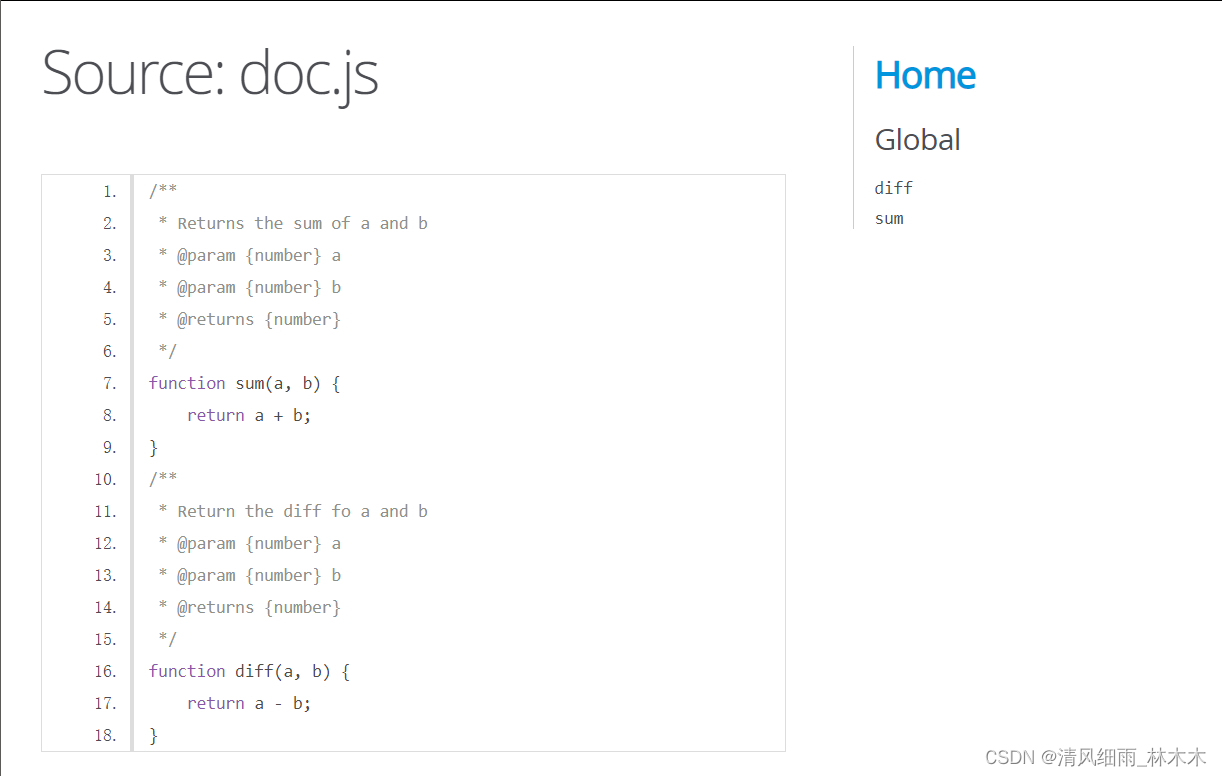
![数据结构 - 队列 [动画+<span style='color:red;'>代码</span><span style='color:red;'>注释</span>超<span style='color:red;'>详解</span>],萌新轻松上手!!!](https://img-blog.csdnimg.cn/direct/ce78bd4337fd412ba203845175c97cb2.gif)

















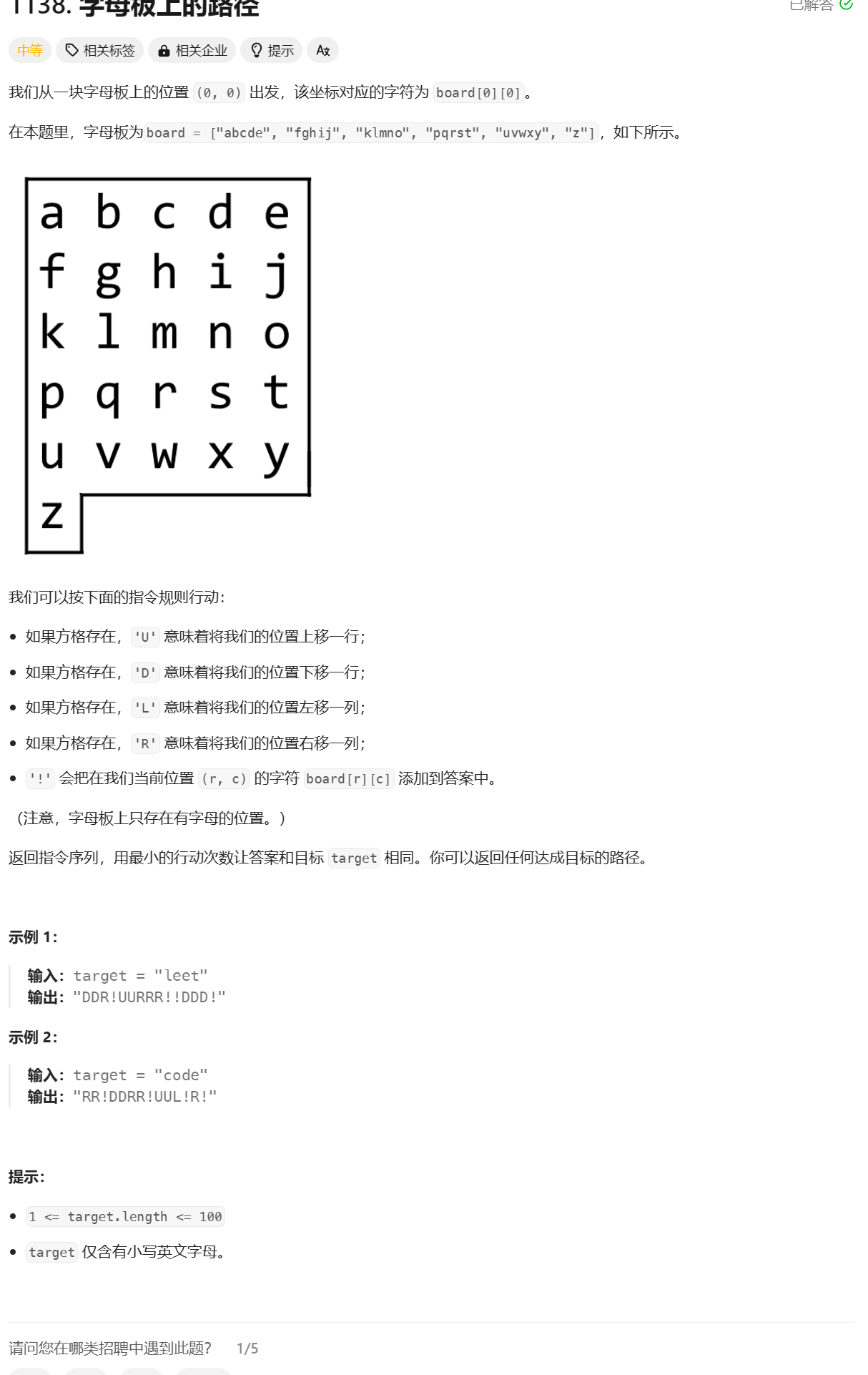

![[python] windows ocr识别](https://img-blog.csdnimg.cn/direct/f72acf04b29643ed8c10594fff8750d2.png)


